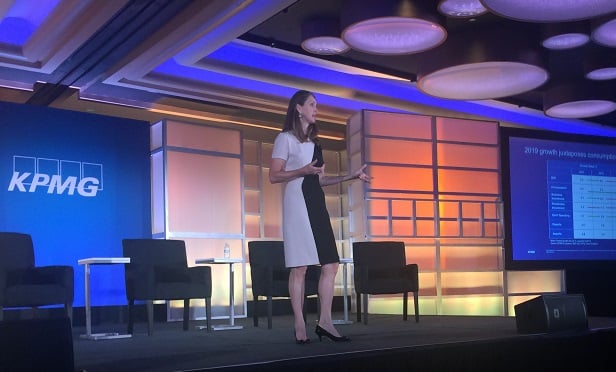U.S. life insurers will soon face a big, little-discussed accounting headache: changing the way they handle expected credit losses.
Life insurers will have to estimate the odds that the loans in their investment portfolios will go bad.
Life insurers will also have to estimate the odds that their reinsurance arrangements will go bad.
(Related: GE Responds to Markopolos LTCI Reinsurance Reserving Criticisms)
Accountants from KPMG talked about the cause of the shift — the Financial Accounting Standards Board’s Current Expected Credit Losses (CECL) standard — Wednesday in New York, at a KPMG insurance conference.
The CECL Standard v. the Long-Duration Contracts Standard
Life insurance companies have already been wrestling loudly, out in the open, with FASB’s Accounting Standards Update 2018-12.
ASU 2018-12 is the new rule that could put life insurers’ earnings on a rollercoaster, by requiring issuers of long-duration contracts, such as long-term care insurance and long-term disability insurance, to re-estimate the value of their in-force benefits obligations every year.
(Related: 5 Things for Agents to Know About the Big New Accounting Thing)
FASB put CECL in a separate accounting standard, Accounting Standards Codification 326. FASB adopted ASC 326 in 2016.
CECL (which is pronounced “Cecil”) will require companies to estimate how likely they are to suffer credit losses on loans when they originate the loans. Companies will have to set aside reserves to cover the losses as soon as the loans are in place.
CECL will to apply to the biggest publicly traded companies by January. CECL is now on track to apply to all companies that use GAAP accounting by 2022. FASB has proposed pushing the implementation date for smaller companies back to 20223.
Life Insurers and CECL
Life insurers knew from the beginning that the ASU 2018-12 long-duration insurance contracts standard was aimed right at them.
Life insurers haven’t been talking as much about ASC 326, partly because typical accounting policymakers have focused on the CECL standard’s role as a banking standard.
The National Association of Insurance Commissioners, for example, has more than 100 separate references to ASU 2018-12 on its website. The NAIC site refers to ASC 326 only four times.
Scott Bain, a member of the accounting advisory services team at KPMG (US), said at the KPMG conference that the CECL standard definitely applies to reinsurance arrangements.
Life insurers will have to estimate what the default rates and document how they came up with their estimates, Bain said.
If a life insurer wants to say the expected default rate is zero, “be very robust in your documentation,” Bain said.
Bain said most insurers seem to be using fairly simple spreadsheets to estimate default risk, not sophisticated modeling.
One reason for the simple methods may be that life insurers tend to have higher-quality loan portfolios than banks do, Bain said. At life insurers, he said, “there have not been that many defaults.”
Michael Lammons, a KPMG partner, said at the insurance conference that ASU 2018-12 and the ASC 326 CECL standard might affect different life insurers in different ways.
ASU 2018-12 is complicated for life insurers with large books of long-duration business to implement, and it may also lead to big changes in some life insurers’ earnings, Lammons said.
The CECL standard seems to be unlikely to have much effect on many life insurers’ earnings, but complying with it will still take a lot of work, Lammons said.
Potential Effect on Financial Professionals
The CECL standard could lead to life insurers to be more careful about offering any life, health or annuity products or programs that rely heavily on reinsurance, and, possibly, to eliminate, or increase the prices of reinsurance-dependent products.
Some insurers have been using more commercial and residential mortgage loans to beef up returns on the investment portfolios supporting life insurance and annuity obligations. The CECL standard could lead those insurers to look for alternative investments that have less impact on projected credit losses, or that make credit losses easier to forecast.
Resources
An ASC 326 discussion by federal banking regulators is available here.
A National Association of Insurance Commissioners discussion of credit losses accounting is available here.
— Read New Accounting Rules to Put Life Insurers on GAAP Reporting Rollercoaster, on ThinkAdvisor.
— Connect with ThinkAdvisor Life/Health on Facebook, LinkedIn and Twitter.







 September 12, 2019 at 02:14 AM
September 12, 2019 at 02:14 AM

















 Slideshow
Slideshow



